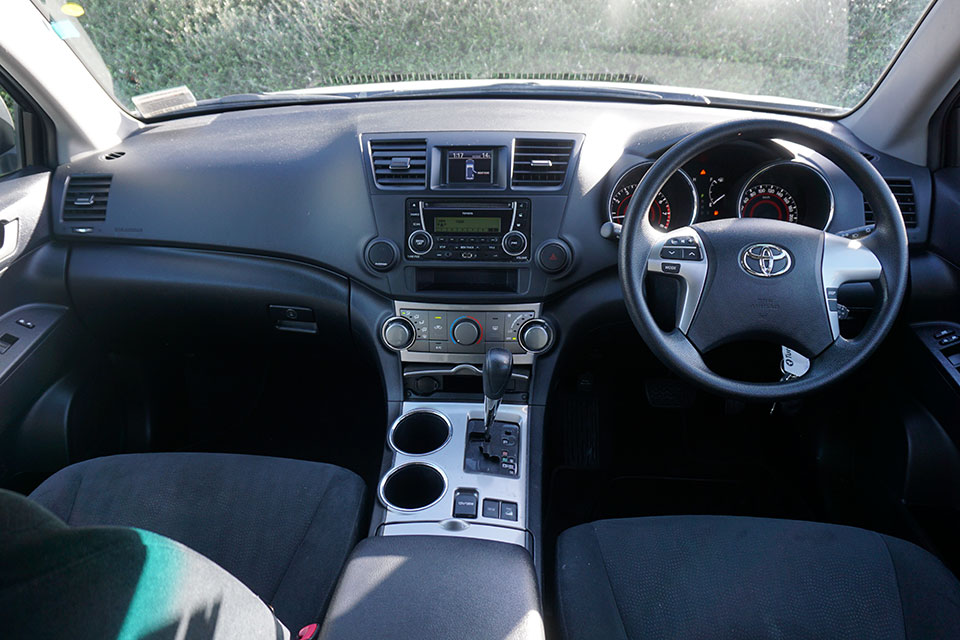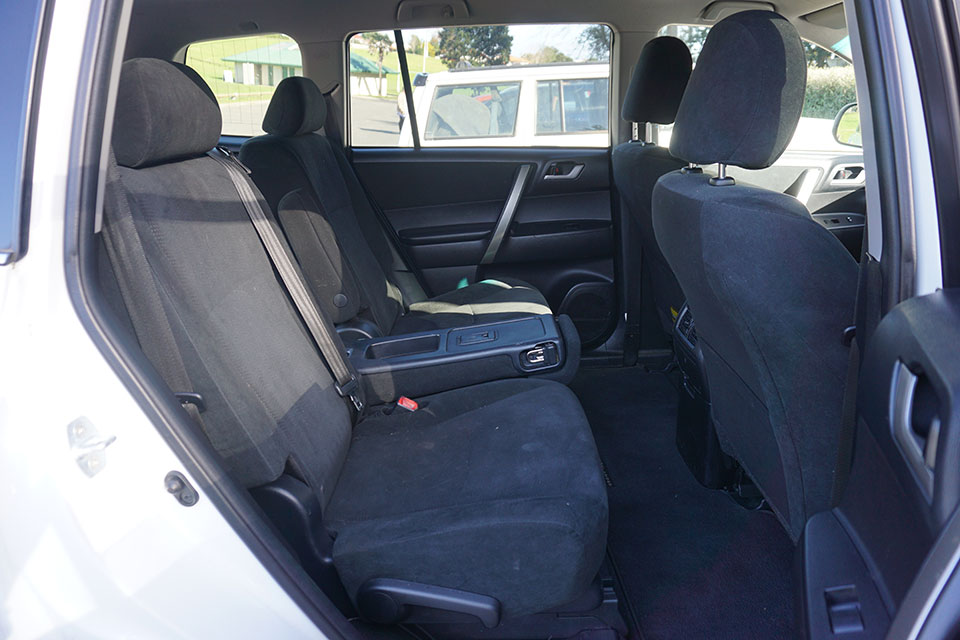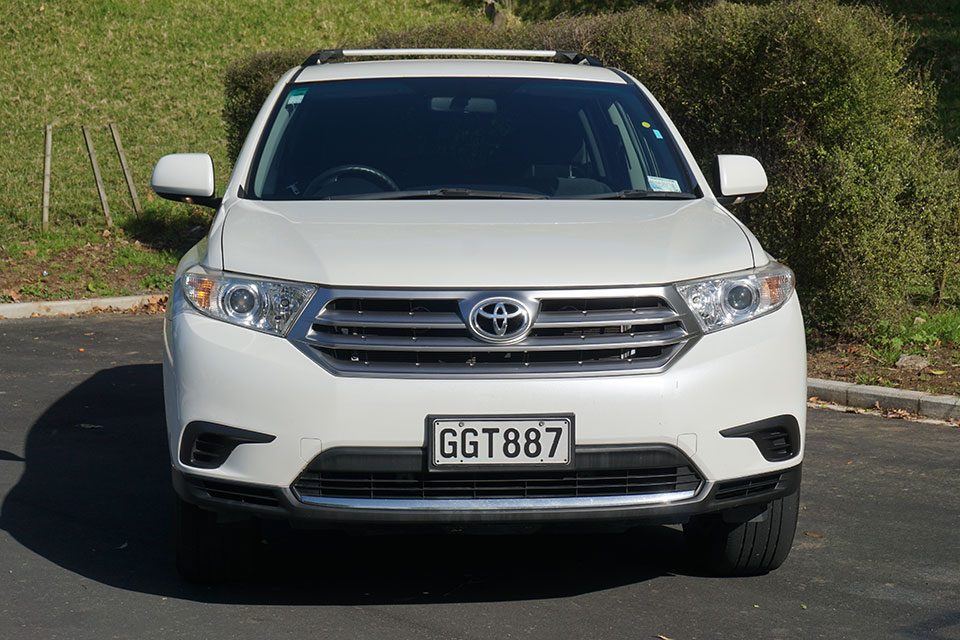Toyota Highlander 2007-2012 used car review
The Toyota Highlander is a family SUV with a huge amount of interior space.

The Toyota Highlander is a family SUV with a huge amount of interior space. Some drivers could find it a little big for the city.
The Toyota Highlander was conceived in the year 2000 to answer increasing demand at the time for SUVs better suited to suburban streets than off the road. Over three generations, it has developed a reputation as a very reliable family SUV.
It can handle seven people and a reasonable amount of luggage. It is hugely popular as a rental car, which ensures a good supply of used vehicles are available. Our review vehicle is a second-generation Highlander.
Inside and out
From the outside, the Highlander looks big. It is an imposing vehicle with a chunky, aggressive front. All Highlanders feature alloy wheels: 17-inch on standard models, 19-inch on the Limited.
It is striking how spacious the Highlander is inside. All Highlanders have three rows of seats for up to seven people. The second row features three seats, though the centre section can be removed to create two separate ‘captain’s seats’ and a walkway down the middle.
This row can also be slid forward and backward to give third-row passengers more legroom. We found this arrangement a little clunky. The mechanism to make it all work is a bit tricky to get right and it also makes the centre seat a little uncomfortable. How much boot space you have in a Highlander depends on the number of passengers you have on board.
With the third row up, the space is 195 litres, enough for three small suitcases or a large one. With this row folded flat that rises to 580 litres. With its big square shape, we think fitting four to six large suitcases in the boot is possible. Additional storage space below the floor also carries the rear cargo blind when it is not in use.
The front seats are big, soft and very comfortable. The driver’s seat can be adjusted for both height and seat base angle. That’s helpful for shorter drivers. All seats are fabric in our standard specification model. A Limited version gets full leather.
The steering column is adjustable for reach and tilt. The wheel features audio system controls, cruise control and a trip computer button.
The centre console has an unusual layout. It features a small LCD screen for vehicle information and the standard reversing camera. Below this is a CD stereo system with a small LCD screen of its own. The stereo has a USB port for charging phones and connecting devices to play music.
The air-conditioning is a basic manual system and there are no separate controls for rear passengers, common in other seven-seat vehicles. Next to the transmission shifter are two large cup holders, a convenient 12-volt power outlet and additional storage cabinets.
A handy feature for parents is a curved mirror that can pop out from the ceiling of the car. This gives a view of all three rows of seating. Children can be monitored without your eyes being taken away from the road for long.
On the road
The 3.5-litre six-cylinder engine produces 201kW and 337Nm. It is the same as that in the Aurion sedan and has an excellent reputation. It is the only engine available in Highlanders sold in New Zealand. A five-speed automatic transmission, which can be shifted manually, is the only option. The standard model is available in front and all-wheel drive. The Limited is all-wheel drive only.
The engine does an excellent job of handling the Highlander’s weight. It is mostly hushed and smooth, though it can be a little noisy under hard acceleration. The Highlander is set up to be comfortable rather than sporty. The suspension is quite soft and there is a little body roll. All-wheel drive models have plenty of grip in all conditions.
We have found in the past the entry-level two-wheel drive Highlanders can struggle a little taking off in damp conditions without wheel slip.
We would not recommend going far off the road in a Highlander. It has a relatively small amount of ground clearance and road-orientated tyres. All-wheel drive Highlanders feature hill descent control which can control the vehicle's brakes to slow its progress on slippery surfaces. This SUV is most at home on the tarmac, though will handle a gravel road, paddock or ski field car park easily.
For a family car, the Highlander has a healthy tow rating. It can pull 700kg (unbraked) and 2,000kg (braked) or around the weight of a medium-sized trailer boat. The all-wheel drive system will also help on slippery boat ramps.
Visibility from the driver's seat of the Highlander is excellent, with the car feeling smaller to drive than it is. A reversing camera is standard, although the display screen is smaller than in most other vehicles.
Safety
RightCar lists the Toyota Highlander (2007-2014) as having a five-star ANCAP rating. Standard safety equipment includes front, side and curtain airbags.
There is an additional airbag for the driver’s knees. Electronic stability control is standard and the Highlander’s system can make it easier to steer in the right direction to regain control of the car if required.
All rear seats have a full shoulder-style seat belt, which offers more protection than the lap-only type. ISOFIX child seat mounts are fitted to the second-row window positions, with three tether points on the back of this row.
Reliability
Our research has found no common issues with the Highlander. We spoke to the fleet manager of a rental car company that has hundreds of them. The company says the cars have been faultless and very durable. The Highlander has a timing chain, which does not require regular replacement.
Cost of ownership
Toyota recommends the Highlander is serviced every 12 months or 15,000km, whichever comes first. A dealer quoted us $280 for this service.
RightCar estimates that over 14,000km of driving a year, a Highlander will cost $3,250 a year to fuel. The 72-litre fuel tank will cost $144 to fill and should take you 580km before the fuel light comes on.
A vehicle licence for the Highlander costs $85.59 a year, with the car in the cheapest ACC levy group.
Trade Me Insurance estimates insurance for a Highlander valued at $26,650 will cost $59.34* per month. This is $5 less than a Nissan Pathfinder.
Buyers' guide
Toyota Highlanders on Trade Me range from $10,000 to $41,000 for later and lower mileage vehicles. This generation Highlander was not sold in Japan so all Highlanders are New Zealand-new vehicles.
Variants
- Highlander – Features seven seats, fabric interior, manual air-conditioning, CD player, seven airbags, electronic stability control, alloy wheels and reversing camera.
- Limited – Adds climate control air-conditioning, leather upholstery, six-CD stereo, heated front seats, electric driver seat adjustment and fog lights.
Timeline
- 2005 Launched in New Zealand
- 2011 Receives a cosmetic facelift, including new front end styling
- 2013 Replaced by new generation
Details
2012 Toyota Highlander
$20,000 to $39,000 for models which have travelled 70,000 to 120,000km
3.5-litre six-cylinder, 201kW/337Nm (claimed)
Five-speed automatic, all-wheel drive
Five-star ANCAP
15,000km or 12 months
Full-size steel wheel
11.6-litres per 100km (claimed)
Regular
4785mm
1917mm
1729mm
700kg (unbraked), 2000kg (braked)
11.8m
This review covers the Toyota Highlander for model years 2007, 2008, 2009, 2010, 2011 and 2012.
Review vehicle supplied by Turners Cars.
*Our insurance estimates are based on a 35-year-old male with no accidents in the last two years, garaging the car in Mission Bay, Auckland. The car is not used for business and will cover 10,000km to 20,000km a year. We estimate with no option add-ons and $500 excess. Customise your estimate at Trade Me Insurance.
Image gallery
Also consider



